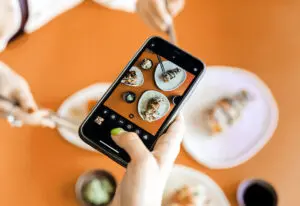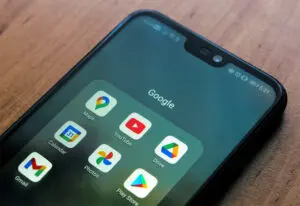
Consumers Are Looking Forward to the Future. Is Your Brand?
There’s no doubt that COVID-19 has changed systems around the world––including the brand landscape. Consumer behavior is a significant influencer in your marketing decisions. But as your audience starts looking toward the post-pandemic future, is your brand ready?
The post-COVID consumer
When states first implemented stay-at-home orders, future-oriented searches took a dip. Instead of interior design, vacation planning, and wedding prepping, people were focused on the now. Queries like How do I keep the kids busy? and What do I cook with all of these shelf stable foods? dominated the search-o-sphere.
But a recent AdWeek piece looked at Pinterest trends and found that consumers are looking forward to the future again––searching for things like “future home” and “future wedding.”
Through March and April, people were stuck at home awaiting their state’s decision on re-openings. Now, at the beginning of May, they’re looking forward to regaining some sense of normalcy. But what is the new normal? Retail brands that had to shut their doors temporarily are re-thinking what it means to host shoppers in their store safely. For restaurants and other gathering spaces, social distancing will likely continue to impact the near future.
Shift to distance
Unsurprisingly, consumer buying behavior online has increased by 14% and some experts believe this will result in a structural change “toward online interaction, toward e-commerce and away from brick and mortar, toward direct-to-consumer away from department stores.”
And while you may have spent months or years curating the perfect in-person experience, it may not be what consumers want post-COVID. A new poll even found that 87% of shoppers prefer contactless check-out options. This further applies to online ordering and delivery services for restaurants and grocery stores.
One of the biggest challenges? Consumer anxiety. This means it’s up to marketers to convey “a sense of structure and calm” with their brand experience. Whether it’s online or off.
What’s changed?
Understanding your post-COVID consumer—their needs, anxieties, and expectations—is just one piece of the puzzle. You also need to get a sense of what has changed overall in the brandscape. Adhering to these changes will likely mean the difference between success and failure for future brands. We’ve detailed the most apparent changes that brands should make note of:
Hyper-focus on health
Health brands have been on the rise for the past several years, but post-COVID there will be a new obsession with the industry. Brands that focus on consumer benefits and sustainability (even if you’re not a “wellness” brand) will likely catch consumer attention. People are looking for “good for your body, good for everything…Health is the new wealth.”
For brands in the wellness category, this might mean boosting your core messaging and mission. For other brands, making sustainability a core part of your mission is one place to start. But it might also mean incorporating obvious statements of cleanliness and employee care on your site or brick-and-mortar, innovating for low-touch services, and providing comfort and well-being. The health of your consumers, from purchase to customer service, should be at the forefront of your brand.
Need for empathy and relevancy
Brands can always benefit from showing empathy and staying relevant. But in the post-COVID brandscape, consumers will expect these two factors to be integrated throughout your brand messaging. You’ve likely changed your language from snarky to supportive during the pandemic, but post-COVID you need to continue to read the room. One way to do this is to “keep in mind what might be surrounding your content.” How does your messaging come across? Your tone? The era of tone-deaf brands is firmly over. If your brand’s voice is typically light and fun, that’s still okay. Just pay attention to cultural shifts and adapt your messaging as needed.
If your brand is in one of the declining categories since the pandemic hit (i.e., travel, apparel, away-from-home entertainment), your job might be a little harder than those like Amazon and Whole Foods. But it’s even more reason to convey the importance of your brand, to show that you understand the changes, and to have your brand reflect resiliency and versatility.
New routines
During the pandemic, an unprecedented number of people in the States have lost their jobs. When things begin to shift toward the new normal, many of these people may still struggle. And their consumer habits will likely change as a result. Going forward, your brand needs to be aware of new routines as a result of these losses and the pandemic itself. As mentioned before, the shift to the digital world has been dramatic. Growing markets like stay-at-home employees may present an opportunity for certain brands, though.
Consumer engagement in activities like retail shopping, grocery shopping (in store), restaurants, and work have all declined. If your brand exists in one of these spaces, don’t worry. It’s not time to throw in the towel just yet. It does mean that you will need to monitor your consumer’s habits and behaviors closely. Recent surveys show that “the big boost digital has gotten, and the hit physical has taken, will likely be permanent.” This may be an adjustment for your brand, but may also give you new opportunities.
Shifting tone
The final emerging trend is that the prevalent tone is shifting from sympathetic to optimistic. The first wave of marketing showed brands as support systems “during these uncertain times.” Now that lockdown has become the norm for many, this tone is no longer as relevant. People are searching for brands that are showing the light at the end of the tunnel. Brands that understand how hard it’s been, but are ready to bring back lighter tones and the promise of things returning almost as they were. Brands can support this in their messaging by shifting social and blog content away from COVID-centric copy, by boosting their core messaging, and by offering a positive spin on the changes they’ve had to make (i.e., shifting online).
What will stay the same?
At this point, you might be wondering if anything will remain the same in the branding world. The good news is, yes. There are certain things that consumers will continue to ask for and pursue.
Evergreen brands
Timeless brands do more than make great case studies for marketing blogs. They stand the test of time. If you’ve put in the work to establish your brand as trusted and compelling, you’re already ahead of the post-pandemic game. Despite the changes we listed, consumers are “sticking by the brands they’ve long trusted to get them through and beyond the crisis.”
Even if you’re a relatively new brand without years of experience under your belt, you can take steps now to be timeless. Research consumer behavior patterns and what elements will make your existing brand more useful. Stay away from introducing trendy changes or new products unless it’s vitally relevant.
Direct to consumer
Brands that offer their products directly to consumers like Chewy or HelloFresh are having a moment during the pandemic. But their convenience and contactless approach will remain popular well after COVID. D2C brands have “significant opportunities to deepen their meaningful relationships between their customers and their brands.” Think about how consumer behavior has changed from not only a greater emphasis on digital but also one of lingering fear over the pandemic. Looking forward, if your brand can offer some semblance of normalcy in having trusted products shipped directly to them, you’re one step ahead.
Digital options
Even if you have physical locations, consumers will expect digital offerings going forward. If you’re a brand that’s always offered an online store or digital deals, then you have an advantage. For online-only brands, this is your bread and butter. But if you dealt with consumers in-person before everything changed, then you’ll need to create new online brand avenues. This could be offering online ordering or delivery full time going forward or even digital consultations and appointments. Whatever your brand, find a way to cater to those who have adopted digital habits more fully.
Emphasis on local
Shopping local has been touted as a great economic boost for years. But now that most towns and cities have been ravaged by the impact of coronavirus, local is more important than ever. We’ve seen an increase in our own feeds from local businesses coming up with innovative ways to ride out the stay-at-home orders. We’ve also seen our communities rally together to order takeout, buy gift cards to use in the future, and generally give local businesses some love. If you’re a small or local business, now is the time to tap into your community and boost your local messaging.
How Savy has adapted
Throughout the pandemic, Savy has been here. Our team is still dreaming, creating, and bringing brands to life. And as a small business ourselves, we understand the financial impact that stay home and shelter-in-place orders have had across sectors and industries. Luckily, this isn’t our first crisis.
Our industry veterans navigated the ‘90s dot com crash, and during Savy’s first year we sailed through the Great Recession. What we learned from these experiences is that the brands most likely to survive are the brands most willing to put skin in the game. We’re here to help disruptors, innovators, market leaders, and opportunity seekers come out of this pandemic stronger than ever.
Through the end of June, we’re offering a 15% discount on new services and support services. We’re also offering a six-month payment plan in lieu of a 50% up-front deposit through the end of June.
All this to say that we see you. We understand the difficult changes ahead, and we’re there for you and your brand. Let’s navigate this post-pandemic world together.
Recent Posts
How to Rebrand Your Instagram for Better Engagement and Brand Recognition
Your Instagram presence can act as a beacon for brand recognition and customer engagement. It’s about painting a picture so compelling that your audience cannot help but be drawn to […]
Read MoreFrom Clicks to Conversions: The Science of High-Performing Digital Ads
The journey from interest to purchase is often paved with digital advertisements. However, not all digital ads are crafted equally. While some fade into the background, others command attention and […]
Read MoreBrand Consistency Examples That Will Make You Rethink Your Marketing Strategy
A consistent and strategic brand identity across all platforms is not just beneficial; it’s essential. By exploring real-world brand consistency examples, we uncover the immense power of maintaining a coherent […]
Read More3 Ways to Transform Blogs With SEO and Make Google Love Your Content
As marketers and business owners, our goal is to ensure the blogs we publish confidently stride into the spotlight of Google’s top search results. Achieving this requires great content, but […]
Read More



